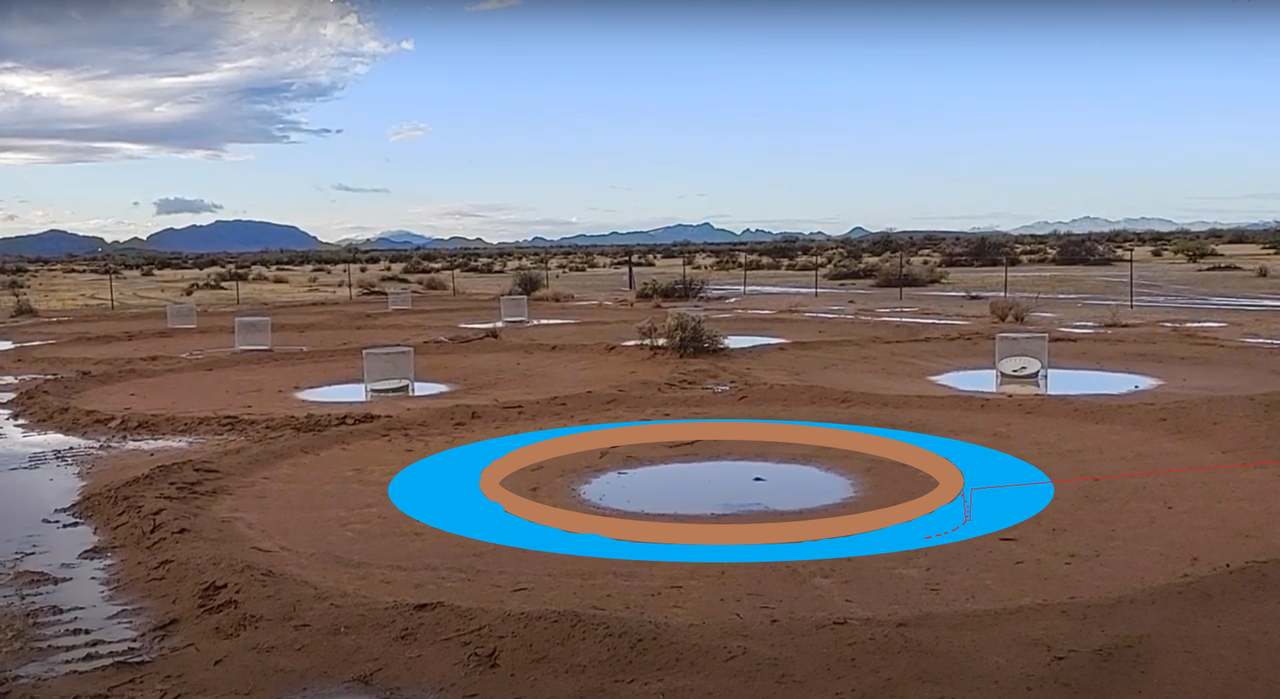
 12
12




 5
5




 1
1




 4
4








Ellen Sanford wrote:Just a note about gopher deterrents. In Practical Permaculture by J. Bloom, when discussing plant guilds, daffodils are recommended as a gopher deterrent. Not sure how that would work with your Lenz but thought I'd mention it. I also live in AZ; very interested in your trials and hope they are successful!
 3
3





 2
2




 1
1




Bryan Elliott wrote:Mikhail,
I like the looks of the lenz you built. They almost have to work!
I guess I missed it somehow, what is the diameter of the dirt works you've built?
Posts from people who live in drier country than me intrigue me.
Please keep posting updates.
Bryan












 1
1





 3
3




 3
3




Abraham Palma wrote:Hi, silly question, can you make the cones steeper with your machine? They will have higher berms, which can help creating a microclimate.
Your climate is a little extreme, so maybe you need extreme measures to preserve the little water you might have caught: Shade, wind protection, mulch.
I'm trying to do a similar thing in a more lenient climate, except that I'm digging deep triangular holes by hand, with high berms, but I have bushes and trees around, so it's not bare grounds as yours.
If I had to work with yours (and had the resources), I'd probably add something at the berms for increased wind protection (a circular small wooden fence for every tree, a fabric hold with sticks, bricks, rocks, maybe create some walled patios for a bigger area), I'd try a few different mulches (flat stones, wood chips, dead bushes), I'd try to protect the wet ground from the midday sun, something that I could use like an umbrella, maybe an arched roof, allowing the morning and evening sun to reach the plant. And I'd add an ammendment to the soil so it retains more water (perlite or stable organic matter). See what works and what doesn't.
Also, in my climate it is usual to irrigate the tress when they are less than two years old, to help them get started. If you don't have water to irrigate them all, just pick 4-5 trees you know you can water and make them survive the first two years. Water them deep, so they develop deep roots. After a couple of years, take on another 4-5 trees. The more established trees you achieve, the easier it will be for the following ones (more shadow, more humidity around. more organic resources)
 2
2




Home: SW Colorado, 38N Latitude, 2100m elevation, Zone 5b/6a
Ask Me About: Keyline in Broadacre, Pasture restoration, Electric Vehicles, Solar, Computers/Networking/Automation
 2
2




 5
5




Mikhail Mulbasicov wrote: yeah, after the seedlings/saplings are established I'll mulch the inner circle.
probably straw or something similar with some heavier branches/stem ontop to secure it (wind, "floating", etc).
Right now, the Groasis Waterboxx provides a "mulching effect" I suppose; I'll pull those boxxes off of the mesquites this spring.
I bought some native desert reveg.seed in bulk .... I'll seed-in a circle of that around the perimeter of the tree.




shauna carr wrote:
Mikhail Mulbasicov wrote: yeah, after the seedlings/saplings are established I'll mulch the inner circle.
probably straw or something similar with some heavier branches/stem ontop to secure it (wind, "floating", etc).
Right now, the Groasis Waterboxx provides a "mulching effect" I suppose; I'll pull those boxxes off of the mesquites this spring.
I bought some native desert reveg.seed in bulk .... I'll seed-in a circle of that around the perimeter of the tree.
( mulch post ... see above ^ )
 2
2




This area has no native rocks or stones available though. Importing would be tough (for hundreds of tree sites).
 2
2









 6
6





 4
4




This is all just my opinion based on a flawed memory

 2
2




 1
1








jer ander wrote:great work. im doing reforestation in wittmann, west of phoenix. i have a lady that i get tree starts from near thunderbird and 32nd st. for like 2-3$. mesquites, palo verdes and others. i got some ok tree tubes from forestry suppliers website. i've been using stucco wire and 3 stakes to protect from rabbits. my desert lot got back burned summer of 2020, so the rodents were at a distance for abit. i haven't had to deal with gophers thankfully
 1
1




 2
2












Mikhail Mulbasicov wrote:
I believe I could make a reamer-tool to knife-in a mini-swale within each lenz.
The problem is, I don't know if the trench could displace enough soil to the surface to create a high enough of a berm to hold back all that water.
I guess the wider the mini-trench, the more dirt I'd create.
Something like this.

Its scary to think about if the area got blasted with an 1" of rain in an hour, or say a 100 year flood.
Eventually, the system would get wiped out or eroded; by then, hopefully the tree is fully established and the ground-form is still kinda half-a** working.
When in doubt, doubt the doubt.




jer ander wrote: looks good. lets hope more rain comes soon. the mesquites might start growing fast after the watering.
 1
1




Michael Fundaro wrote:
I have a thought, based on my experience in the high desert, and from what I have read. I like your lens dish around your trees. That is a great idea. While the trees are getting started, and while the root spread is still minimal I think your idea is spot on. As the trees grow, and as the roots spread, maybe in a few years it would be time to think of a swale or ditch or something to retain the water near the edge of the trees canopy. My understanding is that the roots usually spread a distance equal to the trees canopy. So, in three or four or maybe 5 years when the tree is really established you might consider making a berm, or ditch, or swale several feet out from the trunk so the water that runs down from the outer reaches of the lens will collect near the outer reaches of the roots and slowly soak in to the ground where it is needed.
Do you have, or are you planning, any drip irrigation to your trees?
Regarding mulching with wood chips, the idea is that the wood chips shade the soil and limit the heat build up in, and also limit the evaporation from, the soil. A few inches, or maybe up to 6 inches where you are, of mulch will help hold the moisture and will help keep the soil cool which will also help slow evaporation. This year was my first year with deep wood chips and every where I have deep wood chips all the plants and trees are doing much better and the soil is staying moist as long as I water every 2 or 3 days, as opposed to having to water every day last year with terrible results.
One last suggestion, you might consider a ground cover plant that can handle the heat and needs minimal water to plant around each lens/tree as they will help to keep the ground cool and moist by providing shade and the little bit of moisture they give off will help cool the air around your trees and help them survive the heat better.
Good luck.
 3
3













You can't change where you come from, but you can change where you are headed. -- Stupid people are here for our entertainment. Don't be hatin' on them.. Just roll on...




Jeff Welder wrote:Like a swale, wouldn't your water lens benefit from a good mulch, too?

 1
1




Mesquite roots redistributed large amounts of water throughout the year, even during periods of canopy dormancy. Dormant season precipitation (November–March) was often taken up by shallow lateral roots and transferred downward in the soil profile by deeper lateral and tap roots. Such a transfer was also apparent when the trees were active and moisture from summer rainfall was plant available in the upper soil layers. As the upper soil layers dried, sap flow moving toward the canopy in the lateral roots diminished and water use from deeper soils increased via the taproots. The relationship between root sap flow and above-canopy fluxes suggested that deeper “stored” water from HR allowed the trees to transpire more in the spring that followed a winter with significant downward redistribution. Patterns of lateral and tap root sap flow also implied that redistribution may extend the growing season of the trees after summer rains have ended and surface soils are dry, thus allowing the trees to photosynthesize through periods of seasonal drought. The large hydrologic magnitude and the ecological effects of HR we studied, along with mounting evidence of this process occurring in many other ecosystems, indicates that HR should be accounted for in many ecohydrologic modeling efforts.




 2
2




 1
1




Idle dreamer

|
It looks like it's time for me to write you a reality check! Or maybe a tiny ad!
Play Your Way to a Sustainable Lifestyle: Uncover Permaculture Principles with Each Card
https://gardener-gift.com/
|







